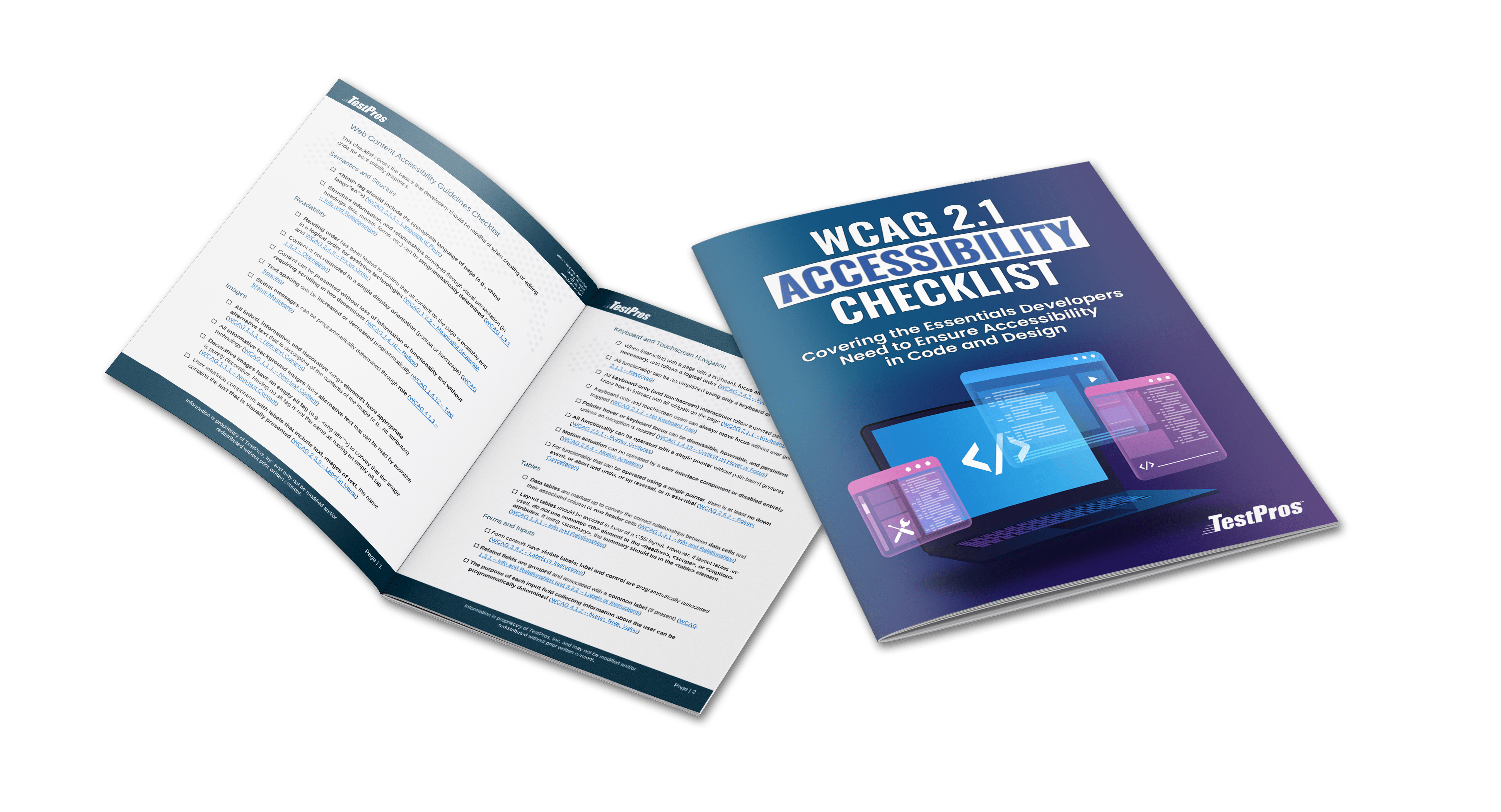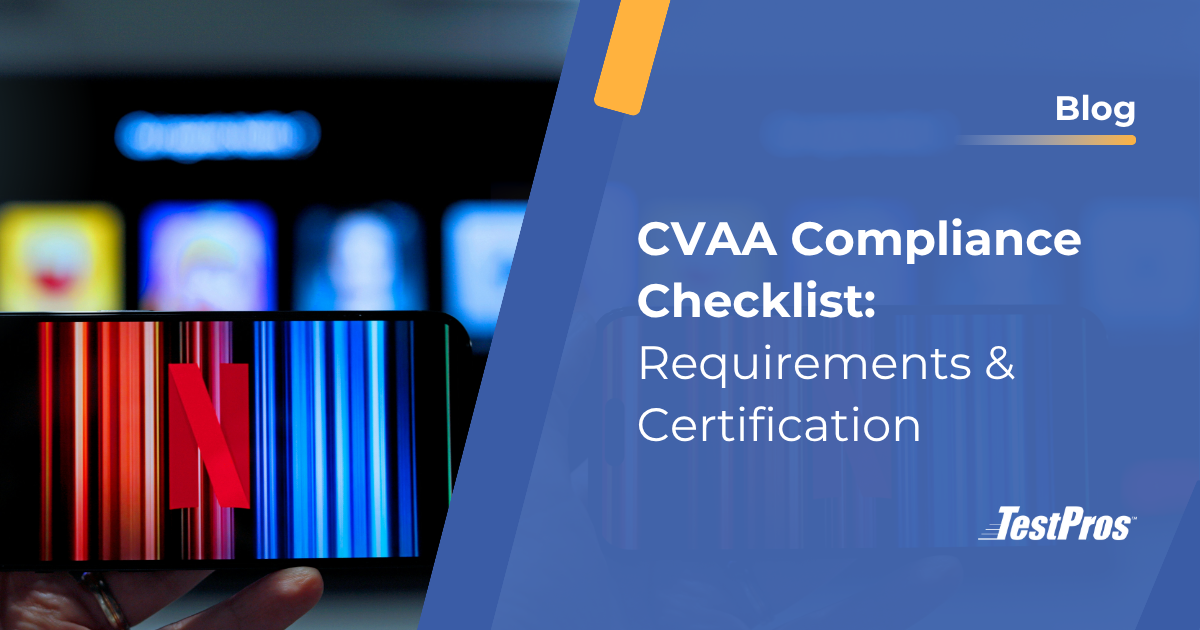Is your website following the ADA compliance standards?
In 2010, the United States Department of Justice released specific guidelines for all public organizations to follow to become accessible to all people with disabilities. That includes all disabled people that use computers and smart devices.
Fast forward to today: lawsuits, demand letters, and regulatory fines have become commonplace, and requirements are being taken more seriously than ever before.
Private businesses have to comply with Title III of the ADA, while state and local governments must meet the upcoming deadline for the new Title II requirements.
Making your website and digital content accessible is no longer a choice.
What Makes a Site Accessible?
To meet ADA compliance standards, websites must adhere to the Web Content Accessibility Guidelines (WCAG), which include principles such as being perceivable, operable, understandable, and robust.
Free ADA-Compliant Website Checklist
Download our free checklist designed to assist developers, designers, and managers with understanding and complying with the WCAG 2.1 guidelines.

By submitting this form, you consent to TestPros, Inc. storing and processing your information to provide the requested content and communications. Privacy Policy
Understanding the Basics and Importance
Becoming ADA compliant is a proactive effort to not only make all organizations inclusive, but by becoming accessible to all people, it’s a proactive way for organizations to grow.
ADA compliance is short for the Americans with Disabilities Act Standards for Accessible Design. What that means is that all electronic information and technology—i.e, your website—must be accessible to those with disabilities.
The ADA is a civil law that mandates the inclusion of all people, especially those with disabilities, in all areas of public life. That includes the workplace, schools, transportation, and any other places open to the general public.
So while the ADA requires websites and content to be accessible, it has broader guidelines that cover all disabilities and environments.
ADA compliance means following the law that requires equal opportunity for disabled individuals in the public spheres of accommodation.
So who does this apply to?
The Legal Landscape of ADA Compliance
Who should follow ADA requirements?
Ultimately, all websites should be ADA compliant and inclusive to everyone – even if the ADA standards don’t apply to you and your organization.
If all public spheres must adhere to ADA compliance standards, does that mean you do too?
Because ADA applies to all electronic information and technology, i.e., the world wide web and all its websites, ADA compliance applies to virtually all businesses and web developers.
Some examples include:
- State and local government organizations
- Private organizations with 15 employees or more
- Places of business that are considered a place of public accommodation
by Title III - Organizations that work for the public’s benefit (e.g., public transportation, schools, restaurants, bakeries, grocery stores, hotels, banks, accountant offices, law offices, social service centers, gyms, healthcare providers, the United States Postal Service, etc.)
Need help complying with ADA?
Audits, Remediation, Consulting
What happens if my website isn't ADA compliant?
In most cases, when ADA compliance standards are left unmet, it’s not intentional. However, that doesn’t matter because if your website isn’t ADA compliant you’re at risk for a hefty lawsuit. Even if you unintentionally skipped the guidelines provided by the U.S. Department of Justice, you could still end up paying thousands of dollars in lawsuits if you’re website isn’t accessible to everyone.
In addition to a lawsuit, you’ll also be facing the following for being non-compliant with ADA compliance standards:
- Legal fees
- Possible settlement
- Potential public relations problems
- The costs involved in rebuilding your website to be compliant
On top of all of this, you run the risk of losing customers for not making your website accessible to those that are disabled. According to the U.S. Census Bureau, the number of people with disabilities increases by the millions every few years. As of 2010, there were over 56 million people with disabilities—that’s A LOT of people potentially being turned away due to a lack of accessibility.
How to meet ADA compliance standards?
As time progresses, the default standard required for websites continues to rise. In recent years WCAG 2.1 was the standard to follow. But after version 2.2 was released in October 2023, it has been ruled as the standard to comply with by U.S. state and local governments.
The WCAG guidelines have a three-tiered grading system:
Level A: Your website is only accessible by some users
Level AA: Your website is accessible by almost all users
Level AAA: Your website is accessible by all users
It’s usually good enough to meet Level AA of the guidelines. However, your best bet is to build (or rebuild) your website to be 100% compliant so that you don’t leave anybody out.
Here’s a breakdown of what the core principles of the WCAG guidelines look like:

1. Be Perceivable
All users should have the ability to perceive any and all information that appears on your website. That includes things like text, images, videos, and so on.
When we say perceivable, we’re talking about offering alternatives to create accessibility. For example, if your users can’t see, there should be an option to listen to the text. If they can’t hear, there should be an option for closed captioning.
2. Be Operable
All of your users should be able to navigate your website with ease. Any user should be able to utilize every feature you offer, such as site tools. This is something that likely has to be written into your HTML, which means you’ll need a web developer who is current with ADA compliance standards.
3. Be Understandable
Aside from being able to “view” your website and navigate through it, your users also need to be able to understand what they’re reading, listening to, and so on. One way to implement this concept is by providing instructions that come with the site tools, navigation menu, forms, or any other features your website offers.
4. Be Robust
Even if your disabled users are supported by assisted technologies, you still want them to have the same overall experience as your non-disabled users. That means no matter how the content of your website is delivered, it should all be universal. Don’t shorten descriptions, directions, explanations, etc. Treat all users the same by providing them with the full user experience.
Do You Need ADA Compliance Services?
For some, ADA compliance means overhauling your entire website to ensure that the accessible alternatives are built into their HTML coding. It’s costly and tedious, but it’s also necessary. Plus, it’ll become even more costly if you don’t do it.
Think of ADA compliance as a good thing. It’s a way to make your organization inclusive to all, which means more business and a better reputation. If you need help getting started, contact us today. We specialize in accessibility compliance services, and we’ll have you at the highest level of ADA compliance in no time.
FAQ
Most frequent questions and answers
- Provided handicap parking
- Wheelchair ramps for entering and exiting
- Braille signage
- Websites and digital properties that follow WCAG 2.0 AA Guidelines
Both ADA and 508 have the same goals – only Section 508 is a federal law that applies to procurements. This refers to commercial businesses that sell their products or services to the federal government. Additionally, organizations who receive federal aid or funding are required to be web accessible and conform to WCAG.
No, the Americans with Disabilities Act (ADA) works alongside the Web Content Accessibility Guidelines (WCAG). The ADA law points to the WCAG guidelines for guidance on how to make web content accessible. Companies can avoid a lawsuit and win government contracts by auditing their website and software based on WCAG compliance.
The WCAG is an international set of standards used to improve web accessibility. The primary focus is to make HTML accessible throughout all platforms.
ADA compliance requires employers, state and local governments, and businesses to provide equal access and opportunities for people with disabilities. This includes:
- Providing accessible facilities that are free from barriers
- Ensuring accessible communications such as provision of auxiliary aids and services
- Providing reasonable accommodations in the workplace
- Hiring and advancement of qualified individuals with disabilities
- Ensuring that employees with disabilities have equal access to training and benefits
Website compliance is not just limited to the ADA. There are several other standards and regulations, depending on the nature of your website and where your audience is located. Here are some of the key ones:
- Section 508 of the Rehabilitation Act
- California Consumer Privacy Act (CCPA)
- Payment Card Industry Data Security Standard (PCI DSS)
- Children’s Online Privacy Protection Act (COPPA)
- Health Insurance Portability and Accountability Act (HIPAA)
- General Data Protection Regulation (GDPR)





